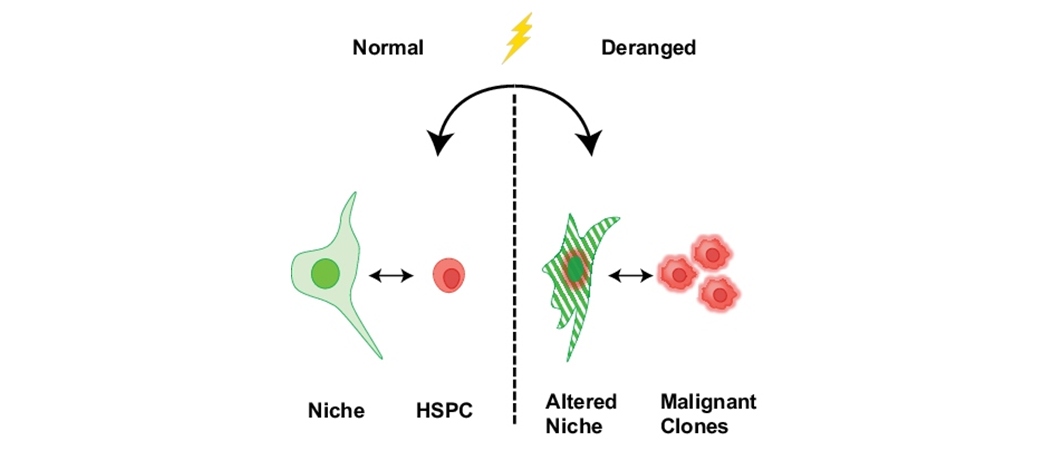The bone marrow is the primary site of hematopoiesis; that is where all blood and immune cells are formed. In this function, the bone marrow constitutes a specific niche, harboring many different cell types—among them, hematopoietic stem and progenitor cells. Recent studies have begun to better elucidate the essential role of this niche in normal hematopoiesis and its contribution to hematopoietic diseases.
In their review published in BioEssays, Shawn Sarkaria, Matthew Decker, and Lei Ding discuss the identity and roles of the hematopoietic niche. They take a close look at deranged hematopoiesis, and suggest that interventions targeted at the interplay of the niche and its stem and progenitor cells provide exciting opportunities for regenerative medicine and therapies.
During normal hematopoiesis, hematopoietic stem cells (HSCs) residing in their perisinusoidal niche are maintained and regulated by a variety of cell types and signals—both via direct and indirect signaling. Sinusoidal endothelial cells and perivascular mesenchymal stromal cells, for example, release SCF and CXCL-12, thereby supporting HSC self-renewal. HSC quiescence and localization, on the other hand, are influenced by mature hematopoietic cells and non-myelinating Schwann cells via TGF-β and CXCL4 signaling and other pathways.
While hematopoietic diseases were long regarded from a cell-centric view, with cell-intrinsic alterations of blood cells playing a major role in the onset and development of the disease, newer studies have revealed that the interdependence between blood cells and surrounding stromal cells also has to be taken into consideration. In a murine model, for example, where osteoprogenitor cells have a deletion of Dicer1, the ribosomal protein Sbds is downregulated, leading to myelodysplasia. Detailed studies of this mouse model have revealed a mechanism by which the mesenchymal niche creates a genotoxic environment. This genotoxic environment in turn is then capable of inducing DNA damage in hematopoietic stem and progenitor cells, thereby ultimately promoting hematopoietic diseases.
The authors also discuss how a better knowledge of the bone marrow environment and the interactions of the various cells within this environment may lead to novel therapies. As specialized bone marrow niches may confer drug resistance and/or maintain malignant cells in a dormant state, targeting these niches to eradicate the malignant cells is just one example of a potential therapeutic strategy.

















